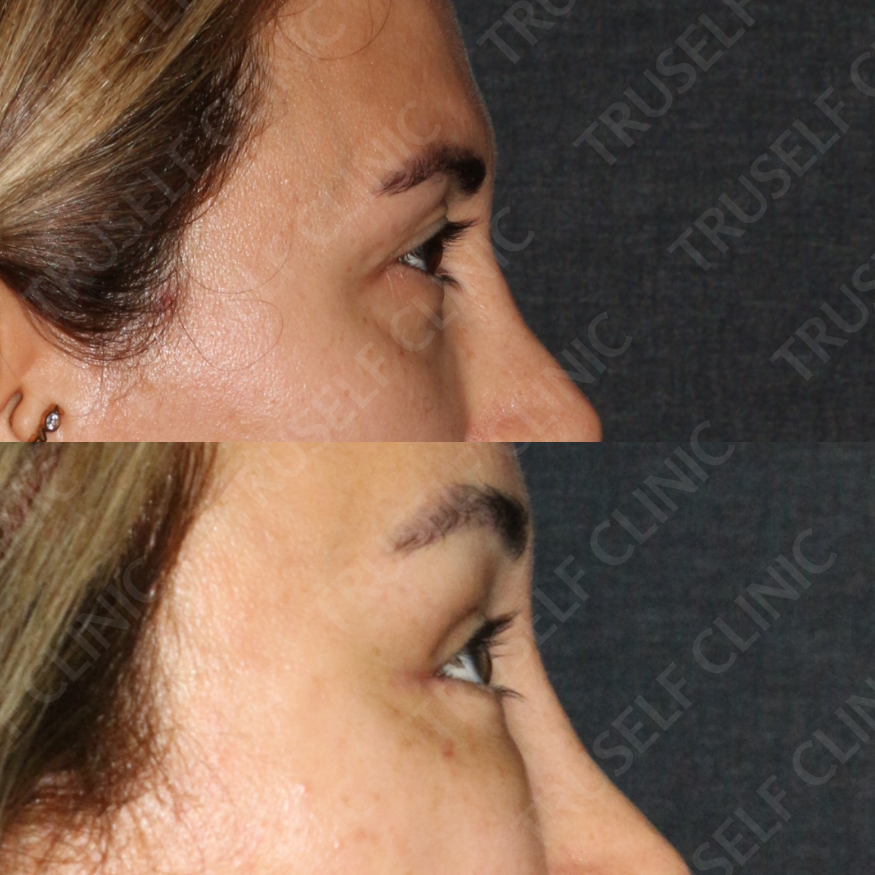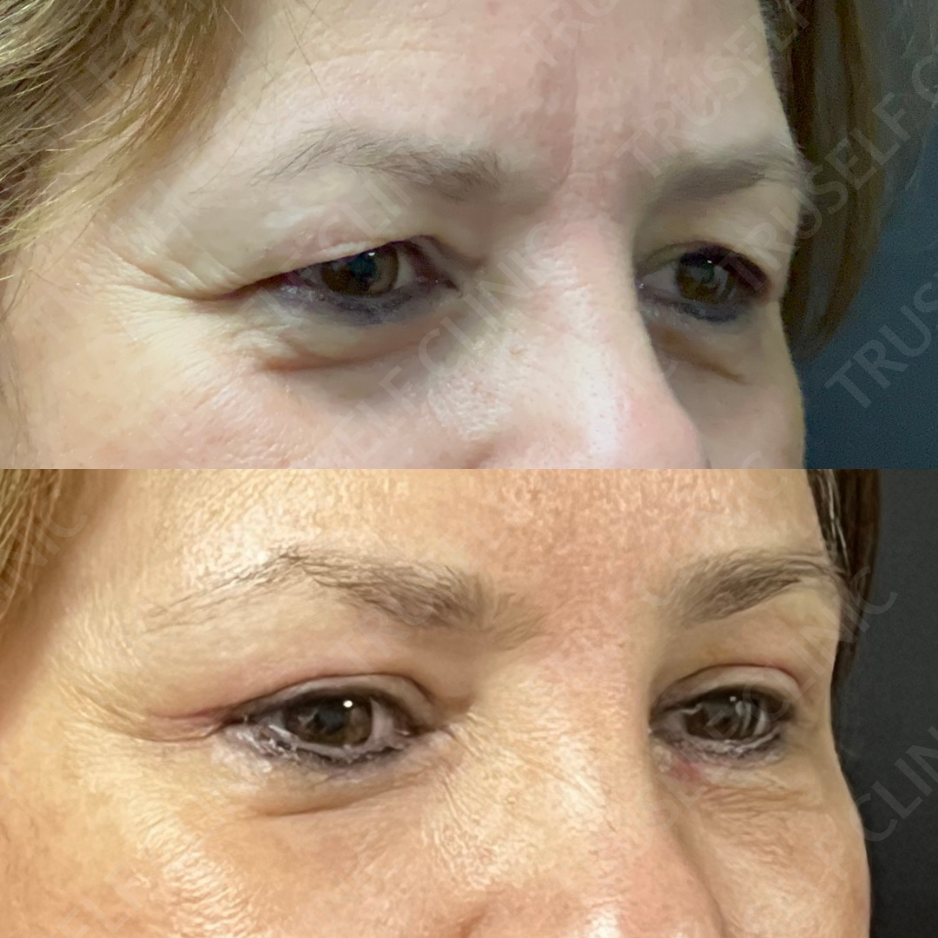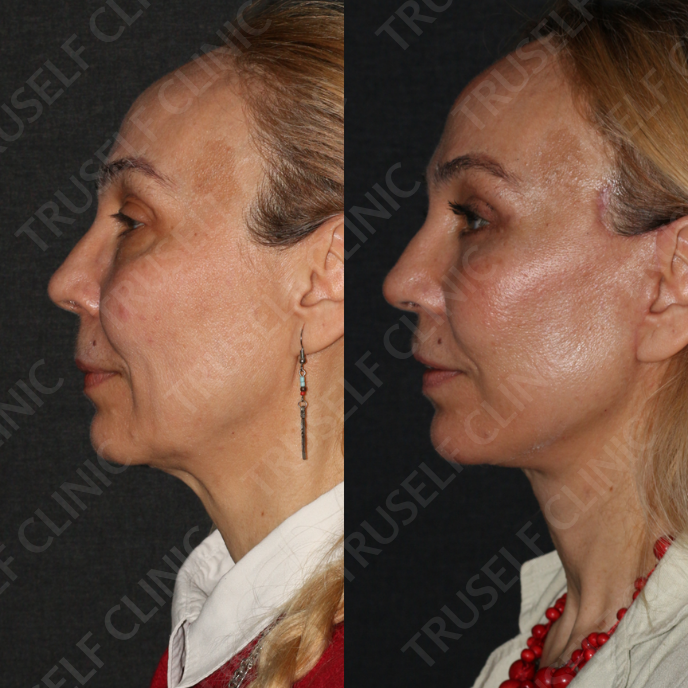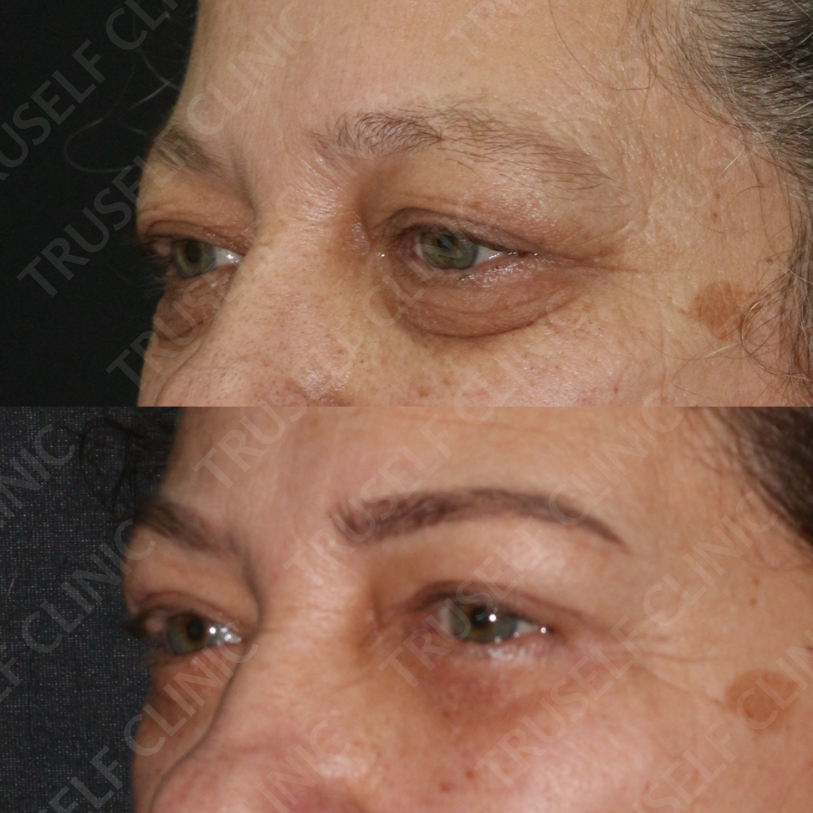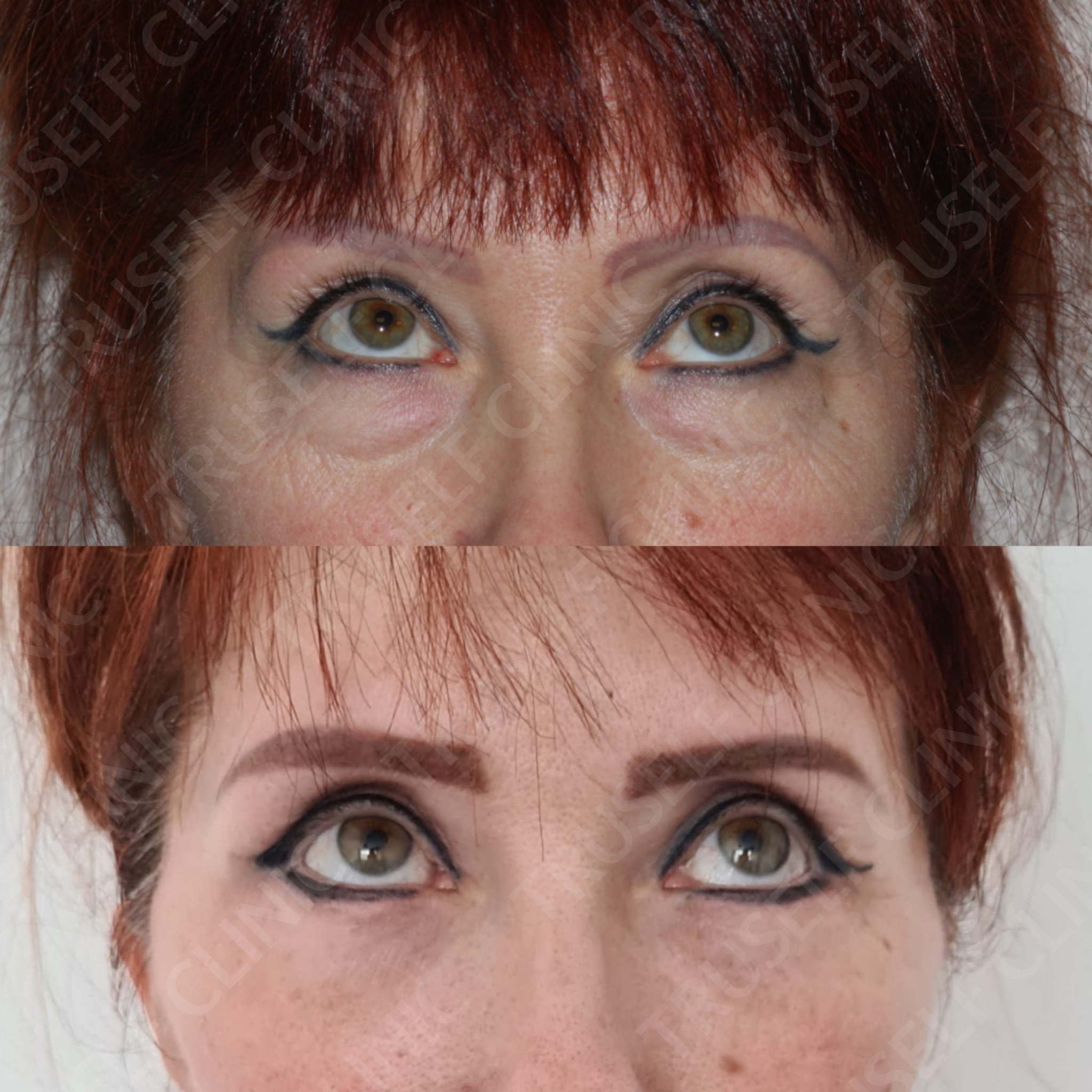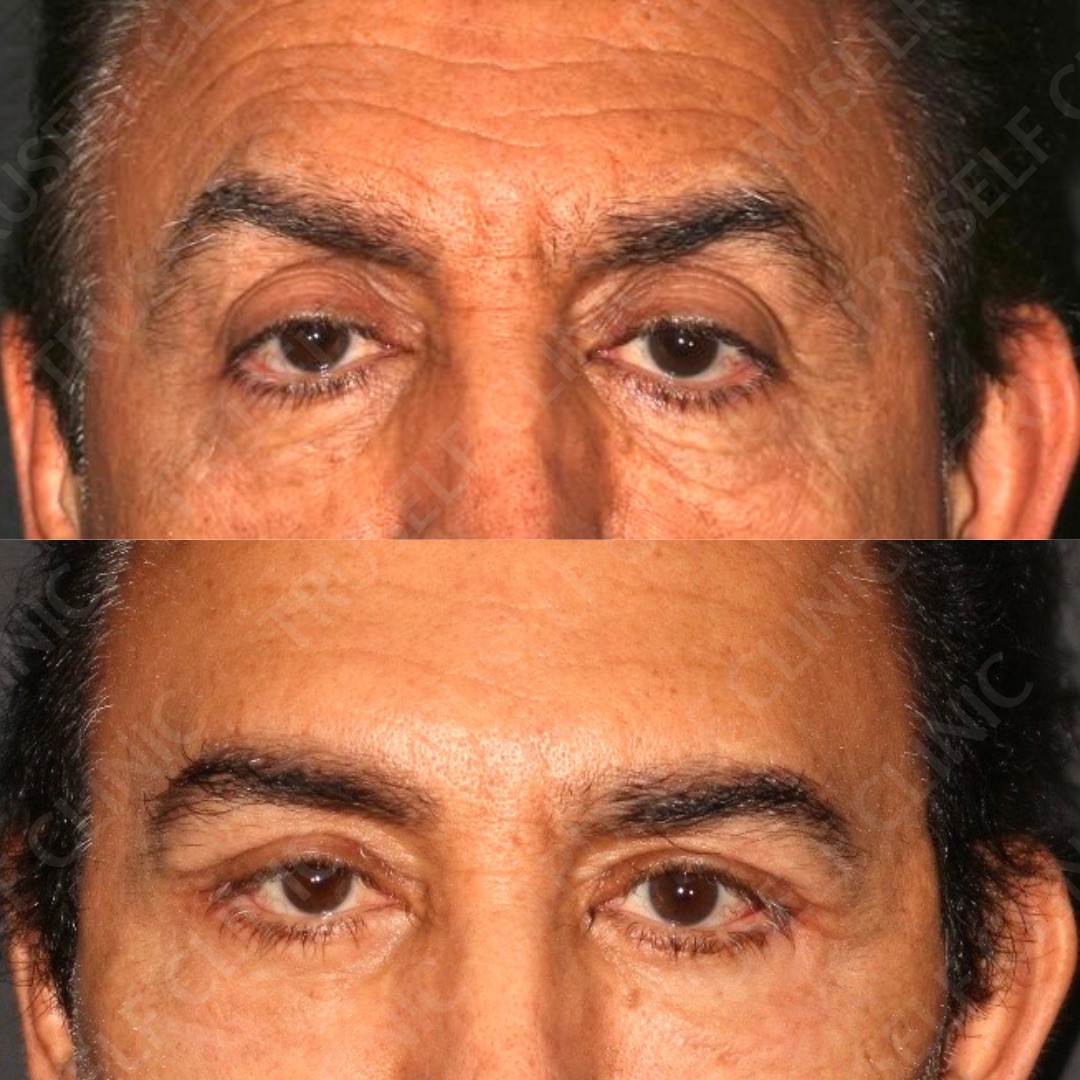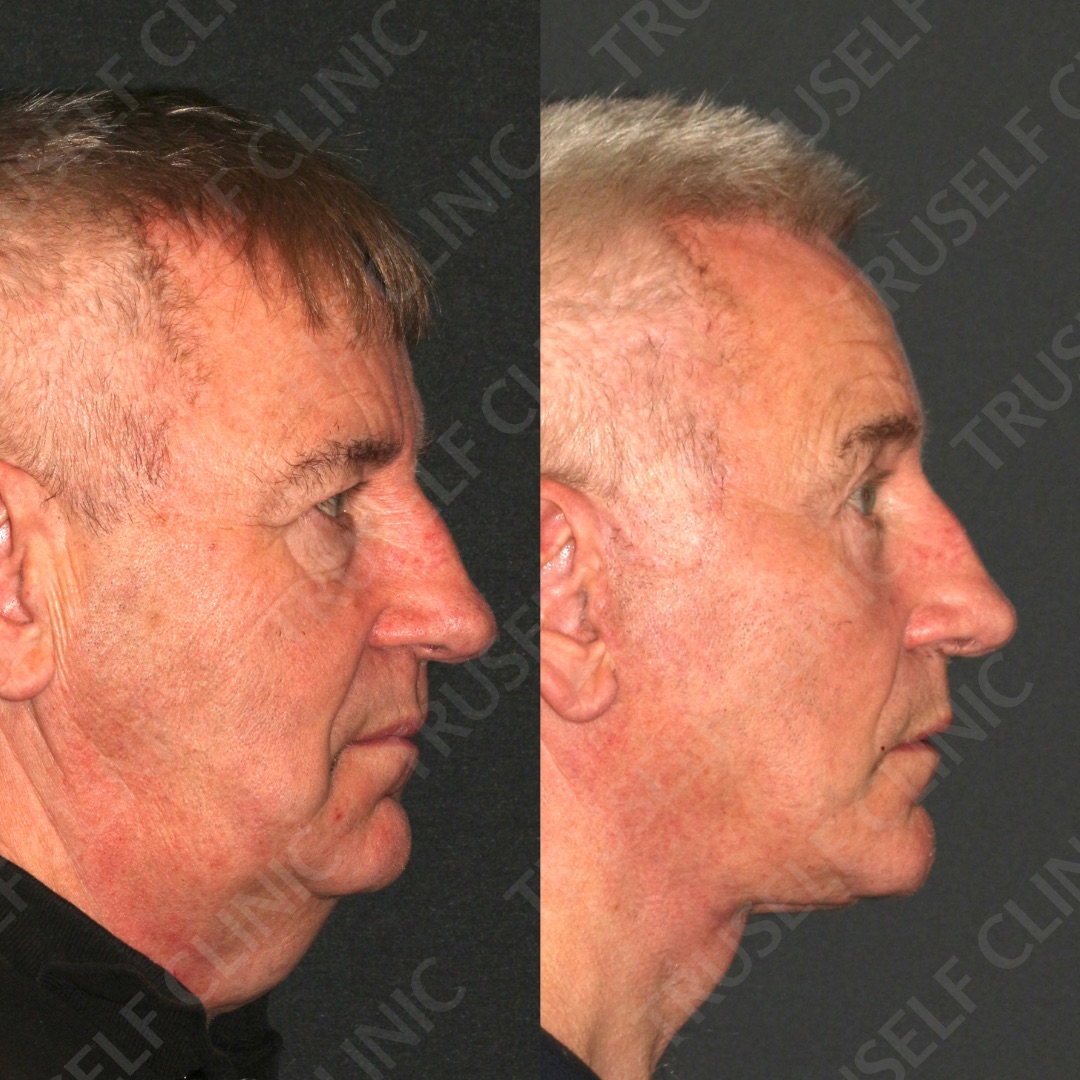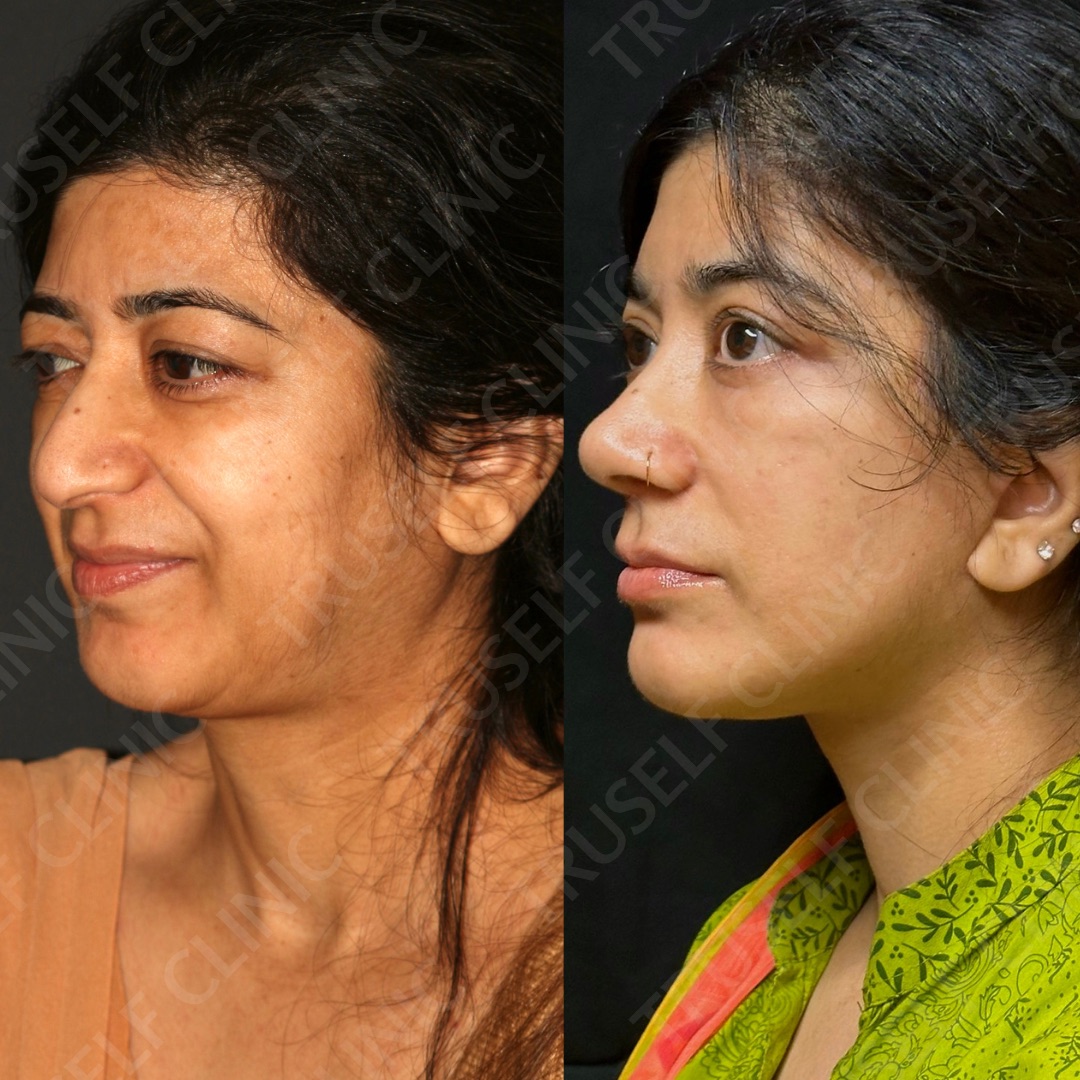Forehead Lift / Brow Lift
A forehead lift, also known as a brow lift, is a cosmetic surgical procedure that is designed to raise and tighten the skin on the forehead and brow area. The goal of the procedure is to create a smoother, more youthful appearance by reducing the appearance of wrinkles, creases, and sagging skin on the forehead and around the eyes.
The procedure can be performed in a number of different ways, depending on the individual patient's needs and goals. In some cases, the surgeon may make incisions at the hairline or above the eyebrows, while in other cases, the procedure may be performed using small incisions and an endoscope.
During the procedure, the surgeon will lift and reposition the skin and underlying tissues on the forehead and brow area. This can help to smooth out wrinkles and creases, while also reducing the appearance of sagging skin and improving the position of the eyebrows.
Recovery time following a forehead lift can vary depending on the specific type of procedure performed. However, most patients can expect some swelling and bruising for a few days after the procedure, and may need to take some time off work to rest and recover. Patients are also typically advised to avoid strenuous physical activity for several weeks following the procedure.
A forehead lift is generally a safe and effective procedure with a low risk of complications. However, as with any surgical procedure, there are some risks involved, including infection, bleeding, and scarring. It's important to choose a qualified and experienced surgeon and to carefully follow their post-operative instructions to minimize the risk of complications and ensure the best possible outcome.
Who is a good candidate for brow lift surgery?
A good candidate for a brow lift surgery is typically an individual who has sagging or drooping brows, deep forehead wrinkles, or creases between the eyebrows, which can contribute to an aged, tired, or angry appearance. The procedure is usually recommended for men and women in their 40s or older, although it may be appropriate for younger individuals with certain anatomical features or medical conditions.
Ideal candidates for a brow lift should be in good overall health, have realistic expectations for the outcome of the procedure, and have a positive outlook. They should also be non-smokers or be willing to quit smoking prior to the surgery, as smoking can increase the risk of complications and interfere with the healing process.
It is important to consult with a qualified plastic surgeon to determine whether a brow lift is the right procedure for your individual needs and goals. The surgeon will evaluate your medical history, skin quality, and facial anatomy, and recommend the most appropriate treatment plan to achieve your desired results.
What are the risks of brow lift?
Brow lift, also known as forehead lift, is a cosmetic surgery procedure that is designed to lift the eyebrows and forehead to give a more youthful and rejuvenated appearance. As with any surgical procedure, there are risks and potential complications associated with brow lift. Some of these risks include:
- Infection: Any surgery carries a risk of infection, and brow lift is no exception. Antibiotics may be prescribed before or after surgery to prevent infection.
- Bleeding: Brow lift may cause bleeding, especially in patients who take blood thinners. Patients should inform their surgeon of any medications they are taking before surgery.
- Nerve damage: Brow lift surgery may cause temporary or permanent nerve damage, which can result in numbness, tingling, or loss of sensation in the forehead, scalp, or face.
- Scarring: Although incisions made during brow lift are small, some scarring is inevitable. Scarring can be minimized by choosing a skilled and experienced surgeon.
- Hair loss: In rare cases, brow lift surgery may result in hair loss or changes in hairline position. This can be minimized by choosing an experienced surgeon who uses appropriate surgical techniques.
- Anesthesia risks: As with any surgery that requires general anesthesia, there are risks associated with the use of anesthesia. Patients should discuss the risks and benefits of anesthesia with their surgeon before the procedure.
- Dissatisfaction with results: Even with the best surgeon and technique, there is no guarantee that a patient will be completely satisfied with the results of brow lift surgery.
It is important for patients to discuss these risks with their surgeon before deciding to undergo brow lift surgery. Patients should also choose a skilled and experienced surgeon who will take the necessary steps to minimize the risks and ensure a safe and successful procedure.
How to get ready for brow lift surgery?
Getting ready for a brow lift surgery involves several steps to ensure that you are healthy, informed, and prepared for the procedure. Here are some steps to follow:
- Consult with a qualified surgeon: The first step in getting ready for a brow lift surgery is to consult with a qualified surgeon who specializes in facial plastic surgery. During your consultation, your surgeon will examine your forehead and brow area, and discuss your goals and expectations for the surgery. They will also explain the risks, benefits, and limitations of the procedure, and answer any questions you may have.
- Follow pre-surgical instructions: Your surgeon will give you specific instructions to follow in the weeks leading up to the surgery. These may include quitting smoking, avoiding certain medications that can increase the risk of bleeding, and arranging for someone to drive you home after the surgery.
- Arrange for help: After the surgery, you will need to rest and avoid strenuous activity for several days. You may also need help with daily tasks, such as cooking, cleaning, and taking care of children or pets. Make sure to arrange for someone to help you during your recovery.
- Plan for recovery time: Recovery time varies depending on the type of brow lift surgery performed, but most patients can return to work and normal activities within one to two weeks after the procedure. However, you may need to avoid strenuous exercise or activities that raise your blood pressure for several weeks.
- Prepare for post-surgical care: Your surgeon will provide specific instructions for post-surgical care, which may include applying cold compresses to reduce swelling, avoiding sun exposure, and taking medications as prescribed.
- Be mentally prepared: Brow lift surgery is a major procedure, and it is important to be mentally prepared for the recovery process. Talk to your surgeon about any concerns you may have, and make sure you have a support system in place to help you through the recovery period.
By following these steps, you can prepare yourself for a successful brow lift surgery and a smooth recovery.
How to take care of yourself after brow lift surgery?
After a brow lift surgery, it's important to take good care of yourself to ensure proper healing and minimize the risk of complications. Here are some general guidelines on how to take care of yourself after a brow lift:
- Rest and avoid strenuous activity for the first few weeks after surgery. Avoid bending over or lifting heavy objects, as this can increase blood pressure and cause bleeding.
- Keep your head elevated when sleeping to help reduce swelling. You may want to use extra pillows or a wedge pillow to keep your head elevated.
- Apply ice packs to the treated areas for the first few days after surgery to help reduce swelling and bruising. Your surgeon may recommend using a specific type of ice pack.
- Keep your incisions clean and dry. Your surgeon will give you specific instructions on how to clean your incisions and when it's safe to shower or wash your hair.
- Avoid exposing your incisions to direct sunlight for several months after surgery to prevent scarring. Wear a hat or use a sunscreen with a high SPF to protect your skin.
- Avoid smoking and alcohol as these can delay the healing process and increase the risk of complications.
- Attend follow-up appointments with your surgeon to monitor your healing progress and ensure that there are no complications.
- Follow a healthy diet and drink plenty of water to promote healing.
- Be patient during the healing process and avoid rushing back into your normal routine too quickly. Your surgeon will advise you on when it's safe to resume normal activities.
- Avoid any activities that may put pressure on the forehead, such as wearing tight hats or headbands, for several weeks after surgery.
If you have any concerns or questions during the healing process, be sure to contact your surgeon for guidance. Following these guidelines can help ensure the best possible outcome and a successful recovery.
How is the scarring after brow lift?
The scarring after a brow lift procedure can vary depending on the technique used by your surgeon. There are several approaches to brow lift surgery, including the traditional coronal brow lift, endoscopic brow lift, and temporal brow lift, and each has its own unique scarring pattern.
In general, a traditional coronal brow lift involves making an incision across the top of the scalp, from ear to ear, which may result in a longer scar. However, the incision is typically well-hidden within the hairline and can be easily concealed with hair styling.
Endoscopic brow lifts and temporal brow lifts involve making smaller incisions within the hairline or around the temples, which results in less noticeable scarring. However, these techniques may not be suitable for all patients, depending on their individual needs and aesthetic goals.
It is important to discuss the scarring and incision placement with your surgeon during your consultation, so you can make an informed decision about which brow lift technique is right for you. In general, most patients find that the benefits of a brow lift outweigh the potential for scarring, as the procedure can provide a more youthful and rejuvenated appearance to the forehead and eyebrows. Your surgeon may also recommend scar creams or other treatments to help minimize the appearance of scarring after your brow lift surgery.
How is the healing process after brow lift surgery?
The healing process after a brow lift, also known as a forehead lift, can vary depending on the type of procedure performed. Here are some general guidelines on what to expect during the healing process after a brow lift:
- Swelling and bruising: Swelling and bruising are common after a brow lift and can last for several weeks. Your surgeon may recommend using cold compresses to help reduce swelling and bruising.
- Dressings: Your surgeon may apply a dressing or bandage to your forehead to help support the area and reduce swelling.
- Stitches: Stitches will be used to close the incisions. Some stitches may dissolve on their own, while others will need to be removed by your surgeon during a follow-up appointment.
- Pain and discomfort: You may experience some pain and discomfort after the surgery, which can be managed with pain medication prescribed by your surgeon.
- Activity: You will need to limit physical activity for a few weeks after the surgery to allow your body to heal properly. Your surgeon will provide you with specific guidelines on when it's safe to resume normal activities.
- Scarring: Scarring is inevitable after any surgical procedure, but your surgeon will make every effort to minimize visible scarring by placing incisions in inconspicuous areas.
- Follow-up appointments: It's important to attend all follow-up appointments with your surgeon to monitor your healing progress and ensure that there are no complications.
It's important to follow all post-operative instructions provided by your surgeon to ensure a smooth and successful recovery. Be sure to contact your surgeon if you have any concerns or questions during the healing process.













